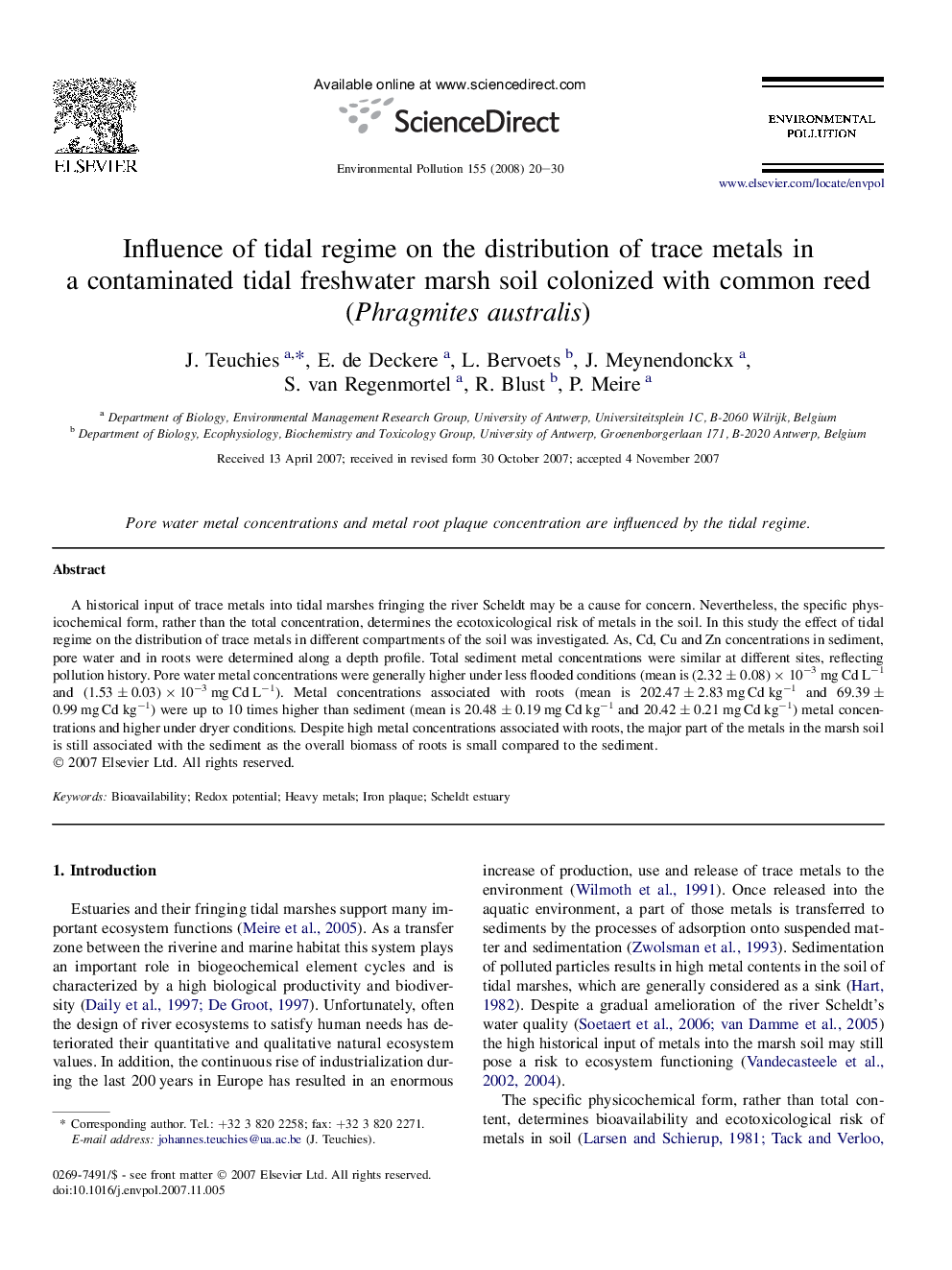| Article ID | Journal | Published Year | Pages | File Type |
|---|---|---|---|---|
| 4426965 | Environmental Pollution | 2008 | 11 Pages |
A historical input of trace metals into tidal marshes fringing the river Scheldt may be a cause for concern. Nevertheless, the specific physicochemical form, rather than the total concentration, determines the ecotoxicological risk of metals in the soil. In this study the effect of tidal regime on the distribution of trace metals in different compartments of the soil was investigated. As, Cd, Cu and Zn concentrations in sediment, pore water and in roots were determined along a depth profile. Total sediment metal concentrations were similar at different sites, reflecting pollution history. Pore water metal concentrations were generally higher under less flooded conditions (mean is (2.32 ± 0.08) × 10−3 mg Cd L−1 and (1.53 ± 0.03) × 10−3 mg Cd L−1). Metal concentrations associated with roots (mean is 202.47 ± 2.83 mg Cd kg−1 and 69.39 ± 0.99 mg Cd kg−1) were up to 10 times higher than sediment (mean is 20.48 ± 0.19 mg Cd kg−1 and 20.42 ± 0.21 mg Cd kg−1) metal concentrations and higher under dryer conditions. Despite high metal concentrations associated with roots, the major part of the metals in the marsh soil is still associated with the sediment as the overall biomass of roots is small compared to the sediment.
